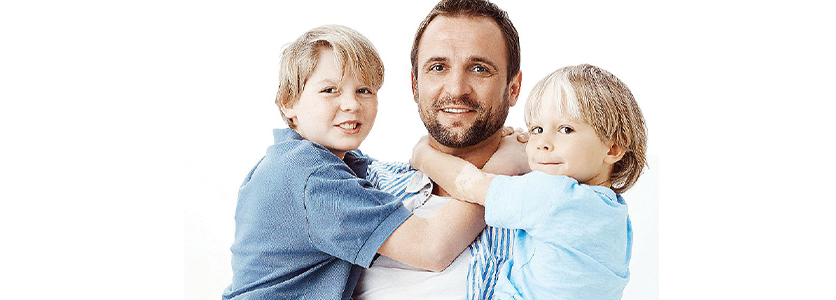THE dangerous effects of smoking are well known. Inhaling nicotine and other toxic chemicals in cigarettes and vape devices can cause many illnesses, such as heart disease, lung cancer and stroke.
This includes first-hand smoke inhalation by a smoker or second-hand smoke inhaled by a non-smoker in the presence of a smoker.
But did you know there is such a thing as third-hand smoke? Third-hand smoke inhalation is not frequently talked about and is not as clearly understood.
“Third-hand smoke” or THS is a term used to describe the contamination that persists after second-hand smoke has been emitted into the air. It refers to the smoke and chemicals that have settled or been absorbed into various surfaces indoors long after a cigarette has been put out.
THS is not just the smell of cigarette smoke lingering in a room after smoking. It includes the hazardous chemicals that may adhere to carpets, walls, furnishings, clothing, hair and toys.
A person, a car or room can continue to smell of smoke after a cigarette has been extinguished.
But even after the smell has subsided, the tobacco residues on these surfaces may remain for years, and the concern by many clinicians is the effects they have on a person’s health.
However, THS is a relatively new concept and data on its effects are limited.
Clings to fabric
The majority of compounds released into the air during smoking indoors will end up being absorbed by room surfaces, and nicotine and other compounds are absorbed by fabric.
THS residues deposited on surfaces can be re-suspended into the air over time, resulting in a lingering source of tobacco-related compounds.
The re-suspension back into the air is dependent on relative humidity and rate of air exchange in the indoor environment, and also varies with surface type.
Studies have shown that the presence of THS compounds in dust is significantly more concentrated in the homes of smokers than in homes of non-smokers.
Measures to reduce cigarette smoke in a room, such as opening a window or turning on a fan, do not prevent THS. Regular cleaning methods are also not that effective in eliminating the chemical compounds associated with THS.
Most of the time, replacing carpets, reupholstering furniture or repainting walls remain the only option.
Exposure can cause death in infants
Infants and children are of particular interest and may be at risk of tobacco-related health problems when they inhale or touch substances containing THS.
Infants and toddlers spend a lot of time on the floor, playing and crawling. They can ingest up to 0.25g of dust per day.
When they play or sleep on surfaces with THS, they absorb the contaminants through their skin or breathe them in through their nose.
Children who live in smoking homes are vulnerable as they are also exposed to THS through clothing and skin when carried or cuddled by a family member who is a smoker.
Research has shown an increased prevalence of respiratory symptoms among children exposed to THS at home. Infants exposed to THS are more likely to die of Sudden Infant Death Syndrome.
They are also at increased risk of developing asthma, and for those who already suffer from asthma, their symptoms may worsen.

Create a smoke-free environment
The only way to protect children and non-smokers is to create a smoke-free environment. Make it a rule to not allow smoking in your home, car and places where your children play. Try to keep your children away from homes of people who smoke. Meet at smoke-free venues instead.
The best thing a smoker can do for their health and the health of their loved ones is to quit smoking.
Reduce the risk of THS exposure on family and friends by smoking outside, washing hands and hair frequently, and changing clothes before coming in contact with non-smokers, particularly infants and children.
Ultimately, the most important measure is to reduce the prevalence of smoking and encourage the introduction of smoke-free indoor and outdoor environments.
Fast facts
- Residual nicotine/other chemicals from tobacco smoke left on indoor surfaces.
- Clings to surfaces, clothing, furniture and bedding long after smoking has stopped.
- Residue builds up over time and can remain for weeks, months or even years.
- Hard to remove and can’t be eliminated by airing out rooms/confining smoking to certain rooms.
- Touching or breathing in the off-gassing from contaminated surfaces leads to exposure.
- Children who crawl, touch surfaces, put things in their mouth are particularly susceptible.
- Reducing the odour from THS does not protect against exposure.
Eliminating THS
- Hard surfaces, fabrics and upholstery must be regularly cleaned or laundered.
- Thoroughly wash walls and ceilings with detergent and hot water.
- Repaint walls with two or three coats of paint but only after walls have been cleaned.
- Replace all curtains/ window blinds.
- Clean ventilation ducts, and replace filters in air conditioning/ heating systems.
- Use an air purifier with a HEPA filter in the room.
- The best prevention is a smoke-free home environment.
This article first appeared in New Straits Times, 3 August 2021.
Share:
Was this article helpful?
Share:
Was this article helpful?
Health Packages
Elevate your health with tailored health packages at Columbia Asia Hospital. Take charge of your health journey today.
AIA Policyholders Self-pay Benefits
Pink October 2024
From
RM80

